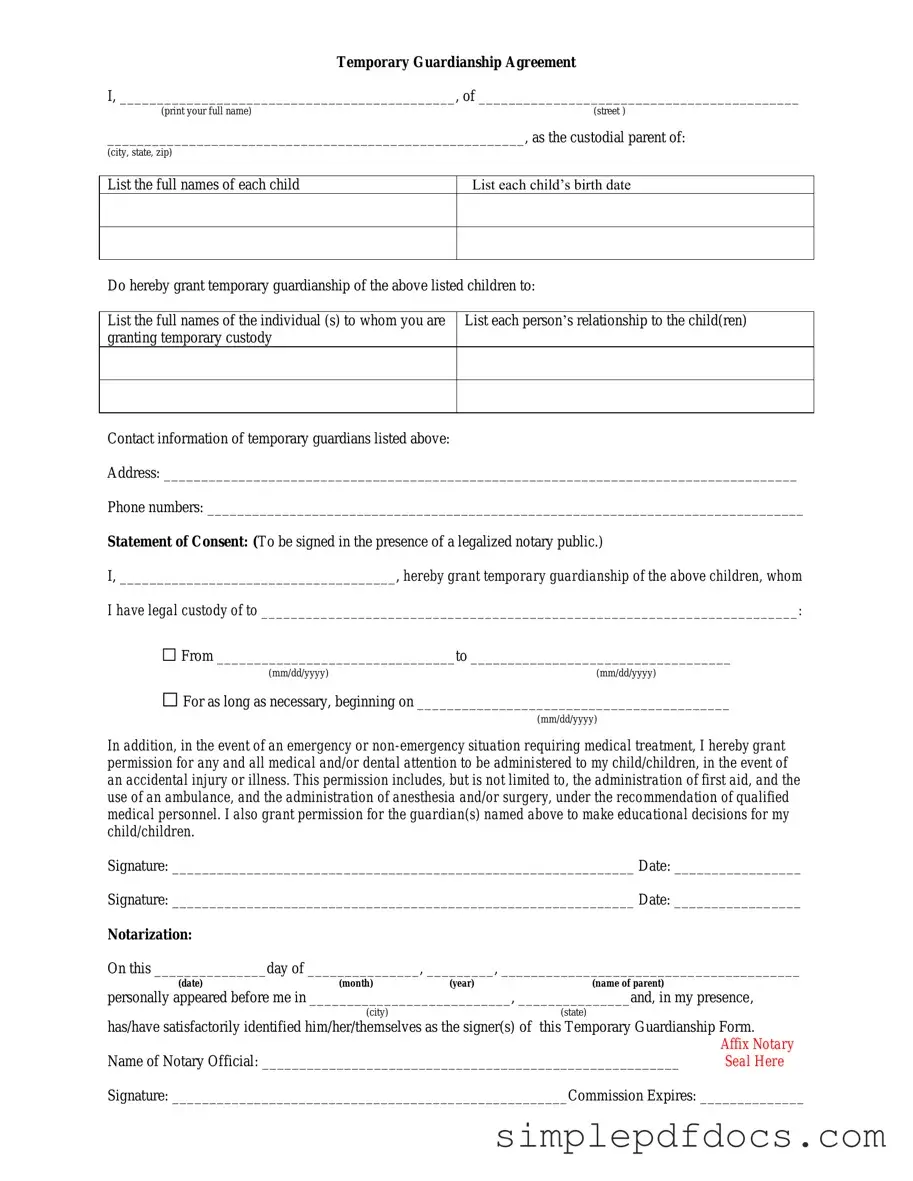When navigating the complexities of child custody arrangements, understanding the Temporary Custody form is crucial for parents and guardians. This form serves as a legal document that allows one party to obtain temporary custody of a child, typically during a period of transition or uncertainty. It outlines the specific terms and conditions under which custody is granted, including the duration of the arrangement and any responsibilities assigned to the custodian. Additionally, the form may require details about the child's living situation, schooling, and healthcare needs. It's important for individuals to provide accurate information, as this form plays a significant role in ensuring the child's well-being and stability during challenging times. By addressing key elements such as visitation rights and communication between parties, the Temporary Custody form helps facilitate a smoother process for all involved. Understanding its components can empower parents to make informed decisions that prioritize the best interests of the child.
